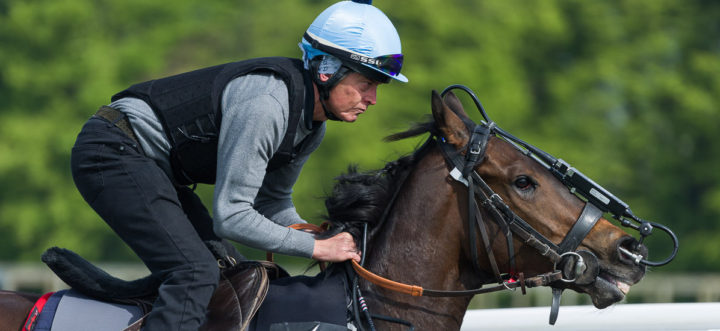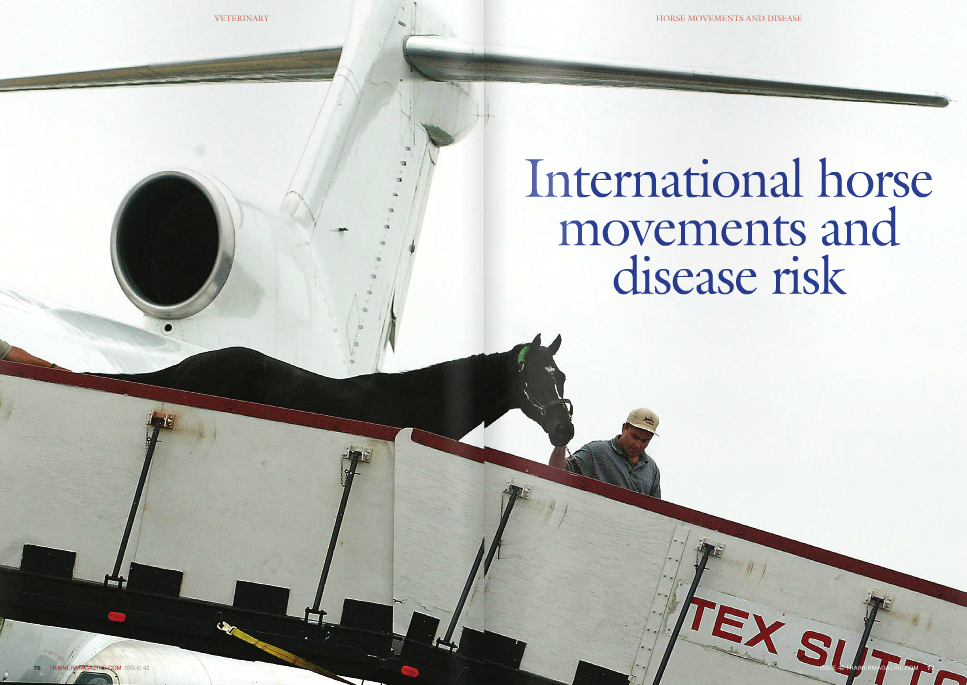Epiduroscopy: An exciting window into back pain in horses
/Published in North American Trainer, Winter 2017 issue.
Back pain is a well-known cause of lameness, gait alterations, and poor performance in sport horses. Up to 25% of dressage horse owners report back problems in their animals, but not only sport horses are affected.
Although racehorses compete at a younger age than other equine athletes, they might suffer from back pain more often than we think, as autopsy studies have identified pathological changes in the back of the majority of examined young Thoroughbreds.
Until recently, it has been very difficult to investigate back pain and it is easy to overlook this as a cause of disappointing performance. A novel surgical technique that has recently been reported in Equine Veterinary Journal may change all this....
To read more of this article - subscribe now!
The importance of identifying lower and upper limb lameness
/Published in North American Trainer, Winter 2017 issue.
In Thoroughbred racing, injuries to the limbs are a major welfare and safety concern, the leading reason for horses to be taken out of training. Lameness causes a high turnover in racing stables and, as many trainers know, it has huge financial implications for the owner, trainer, and the racing industry in general. Previous investigators have found that just over 50% of horses in training in England and Germany experience lameness during training, and approximately 20% of horses in the U.K. suffer lameness that prevents them from returning to training. With this amount of horses on lay-up, it can be difficult to run a profitable racing stable.
In addition to having an impact on the horse’s welfare, severe musculoskeletal injury poses a serious danger for riders, who are at risk when a horse sustains a catastrophic injury or suffers sudden death. Researchers in the U.S. found that a jockey was 171 times more likely to be injured when a horse they were riding in a race died. In Thoroughbred racing, the most common life-threatening injury to horses involves fractures of bones in the fetlock. Therefore, the best way to improve safety and welfare of both horses and jockeys is to highlight risk factors for fractures in an attempt to prevent these catastrophic traumas.
To read more of this article - subscribe now!
Laryngeal Problems - Hocus pocus or cutting edge science?
/FIRST PUBLISHED IN NORTH AMERICAN TRAINER AUGUST - OCTOBER 2017 ISSUE 45
Click here to order this back issue!
PHOTO GALLERY
Recurrent laryngeal neuropathy (RLN) is the correct term for the condition better known as roaring or laryngeal hemiplegia. It is extremely common in Thoroughbreds and represents one of the major causes of poor performance or jockey-reported noise.
Because it is so important, many young horses are scoped at sales looking for laryngeal asymmetry to try to identify those that may be at risk of having this condition. But scoping at rest is fraught with difficulty – the larynx may be normal at rest only to show signs of weakness during exercise, so positive cases can be missed.
Conversely, tired young horses can have apparently poor laryngeal function at rest that in fact is of little significance. Many question whether subjecting foals and young horses to endoscopy at sales is reasonable, although in part this latter concern is reduced now that videoendoscopy is available.
Furthermore, the dynamic endoscopy, overground or on a treadmill, is widely accepted as the best way to evaluate horses suspected of having upper airway disorders leading to dynamic obstruction of the airway during exercise, a population that may or may not have obviously abnormal throats when examined at rest.
Nevertheless, there is a need for better tools to evaluate the larynx for clinical application and also to allow researchers to study the condition in more detail. Two recent studies published in Equine Veterinary Journal have addressed this issue..
To read more - subscribe here!
How rife is contamination on the backstretch?
/2017 Media Eclipse Award winner
Click on the image to read this article online now!
Both first published in North American Trainer issue 43 - February to April '17
Why do horses act up - the psychology of starting gate jitters / tail swishing / kicking out
/CLICK ON THE IMAGE ABOVE TO READ ONLINE
First published in North American Trainer issue 42 - November '16 to January '17
Testosterone and the thoroughbred
/CLICK ON THE IMAGE ABOVE TO READ ONLINE
First published in North American Trainer issue 42 - November '16 to January '17
Equine flu - research and development into the treatment of the disease
/CLICK ON THE IMAGE ABOVE TO READ ONLINE
First published in North American Trainer issue 42 - November '16 to January '17
International horse movements - disease risk
/CLICK ON THE IMAGE ABOVE TO READ ONLINE
First published in North American Trainer issue 42 - November '16 to January '17
Microchipping the thoroughbred racehorse
/CLICK ON IMAGE TO READ ARTICLE
This article appeared in - North American Trainer Issue 41
Equine Joint Medications - which medications give the best results?
/CLICK ON IMAGE TO READ ARTICLE
This article appeared in - North American Trainer Issue 41
Management of respiratory disease in the thoroughbred racehorse
/CLICK ON IMAGE TO READ ARTICLE
This article appeared in - North American Trainer Issue 41
Management of respiratory disease
/CLICK ON IMAGE TO READ ARTICLE
This article appeared in - European Trainer - issue 54
International horse movements and disease risk
/CLICK ON IMAGE TO READ ARTICLE
This article appeared in - European Trainer - issue 54
Equibiosafe keeping our horses safe from infection
/CLICK ON IMAGE TO READ ARTICLE
This article appeared in - European Trainer - issue 54




















